News
From the Collection: Blissymbolics
If the “Father of Semantography” had his way with written language, we’d all be #blissed.
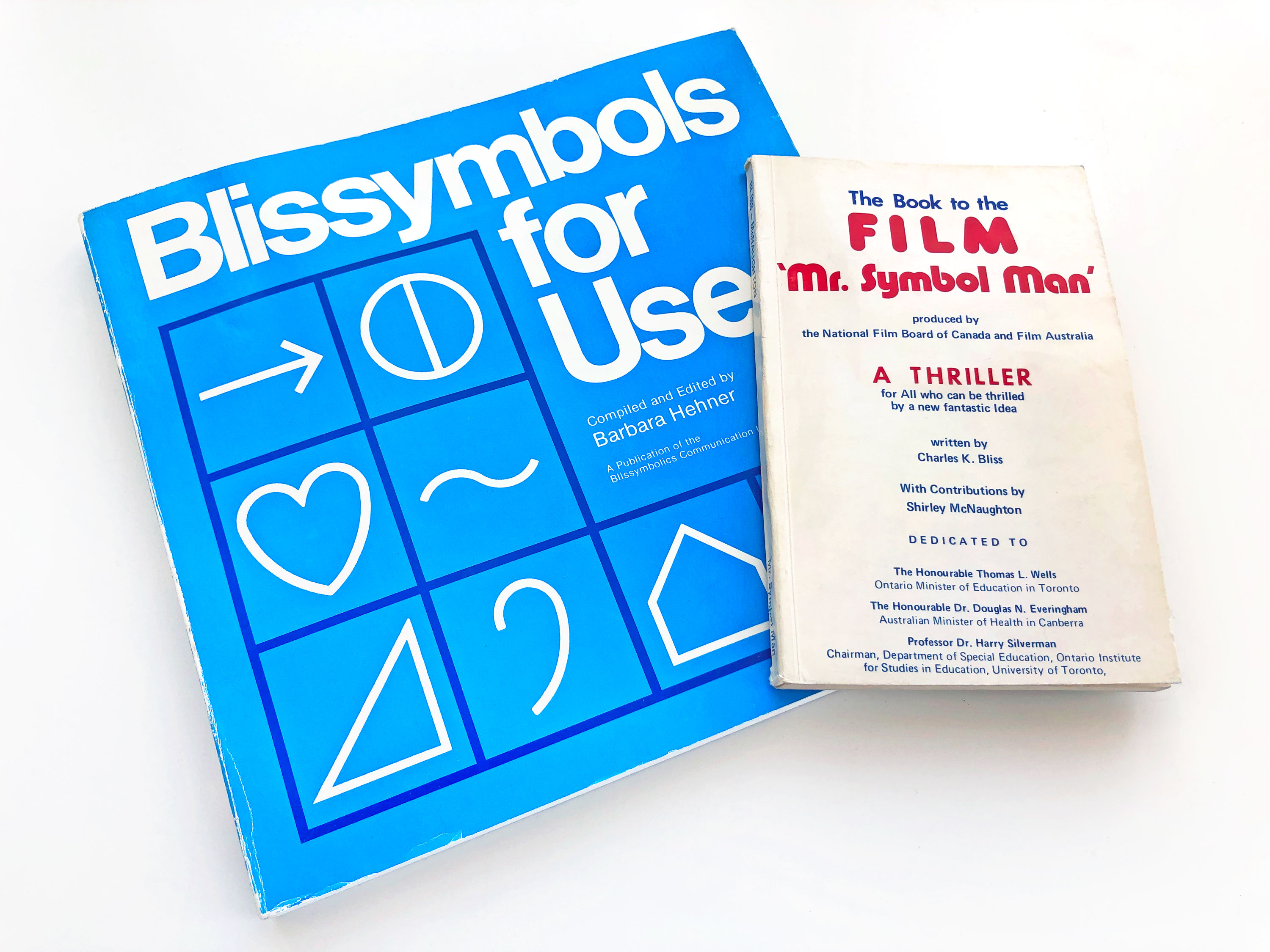
Blissymbols for Use, Barbara Hehner, Blissymbols Communication Institute, Ontario, 1980. Design: Jack Steiner. Illustrations: Alan Daniel. Symbol Drawings: Jim Grice.
The Book to the Film ‘Mr. Symbol Man’, Charles K. Bliss with contributions by Shirley McNaughton, Semantography-Blissymbolics Publications, 1975.
As a handful of literalists have pointed out, Letterform Archive is a bit of a misnomer; while our collection contains many primary source materials (as “archive” implies), we’re also home to an extensive and eclectic reference library. Many of these reference materials come to us from artists and designers as part of donations that include their own work, providing valuable insight into their personal interests and creative influences. There is perhaps no better example of this than the generous donation received in 2017 from user-interface designer and computer-graphics artist Aaron Marcus.
Marcus started out with a keen interest in science and technology, earning his B.A. in Physics from Princeton University in 1965. From there, he landed in the graduate graphic design program at the Yale University School of Art and Architecture, marking the beginning of a career defined by a uniquely multidisciplinary approach to creative problem-solving. His reference library reflects a lifetime of varied interests, from Amish woodworking to traditional masks, but a substantial amount of shelf space was dedicated to semiotics. As a pioneer of visual communication during the advent of modern computer technology, Marcus sought inspiration from ideographic and pictographic writing systems that were developed with the goal of universal understanding in mind.
Blissymbolics is one such system, though like others of its kind, it fell somewhat short of its loftier aims.
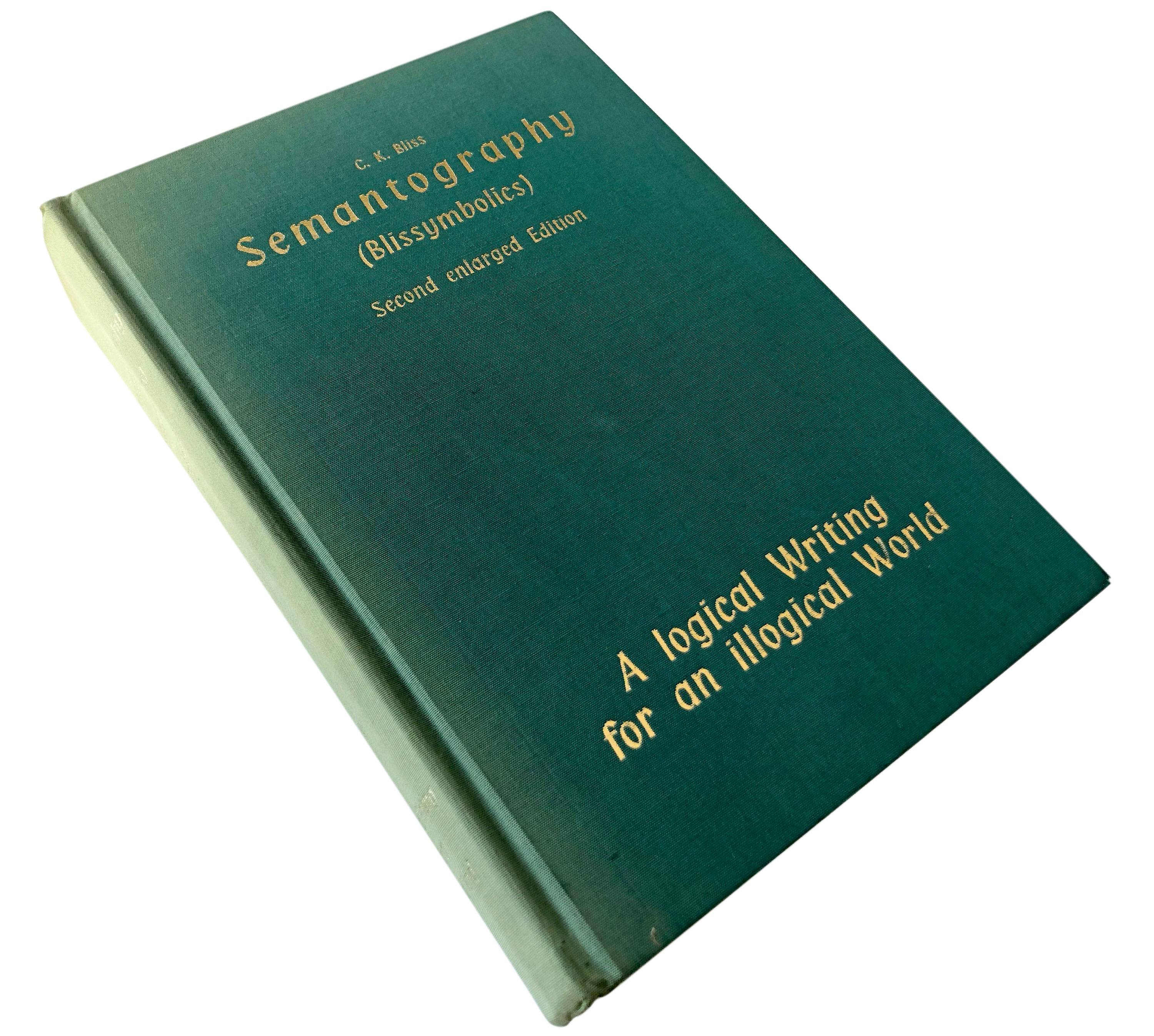
Blissymbolics was conceived by Austro-Hungarian expatriate Charles K. Bliss (1897–1985), born Karl Kasiel Blitz to a Jewish family in the town of Czernowitz (now Chernivtsi in modern-day Ukraine). He was introduced to signs and symbols at an early age in the form of circuit diagrams – his father’s many occupations included mechanic and electrician – which he understood immediately as a “logical language”. Bliss (then Blitz) attended the Vienna University of Technology for chemical engineering and went on to become chief of the patent department at the German TV and radio company Telefunken, a career that was cut short in early 1938 when the Third Reich annexed Austria.
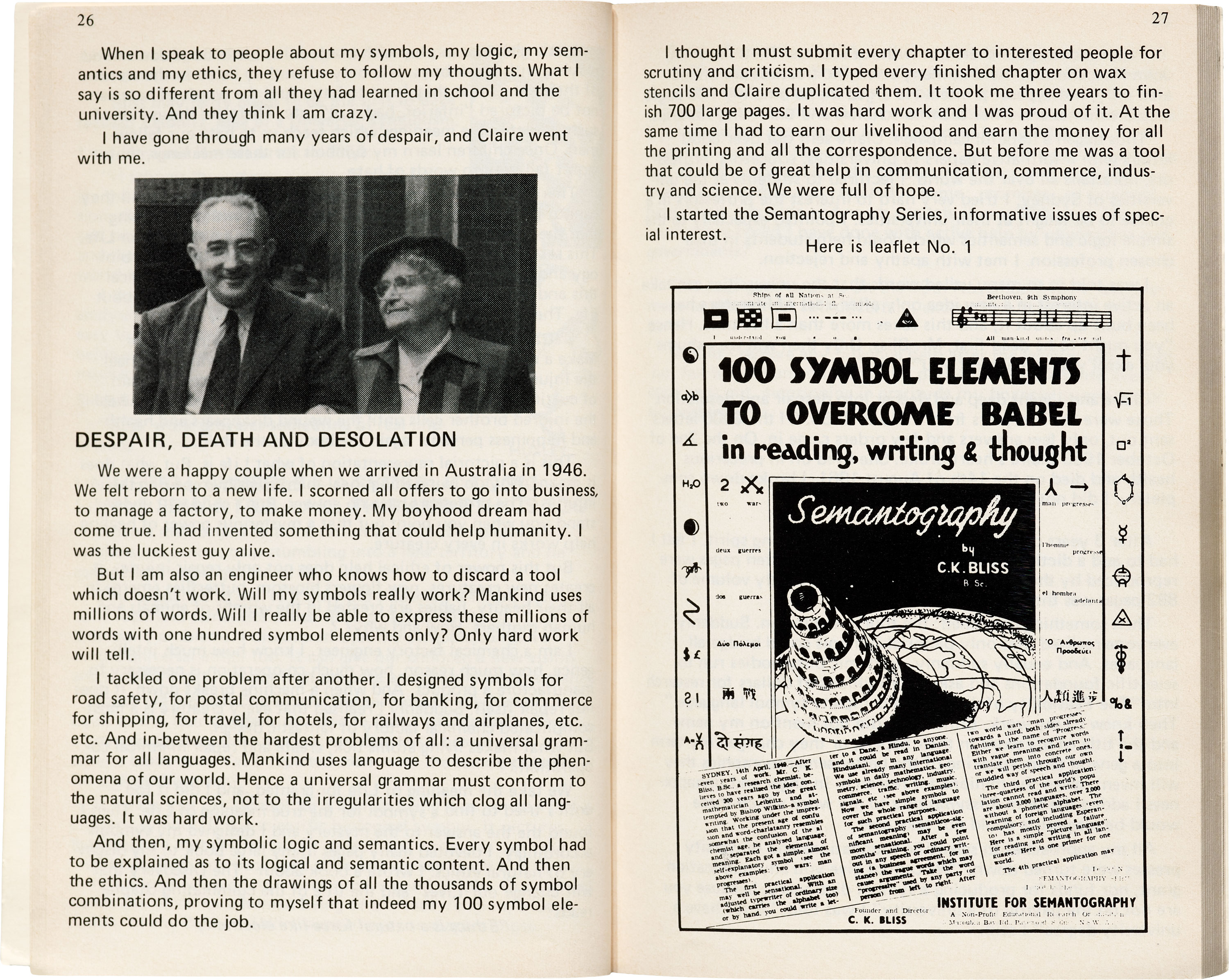
Bliss was sent to Dachau concentration camp, and then to Buchenwald, before escaping to England in 1939. The eight-month German bombing offensive against Britain known as The Blitz began only months later, prompting him to change his surname “from the war-like Blitz to the peaceful Bliss”, as he recalled in a taped interview. Bliss fled to Shanghai by way of Canada and Japan, where he was reunited with his wife. Claire, a German Catholic, had used her connections to get Bliss out of Buchenwald, but her relatively privileged status was not enough to spare her a fraught journey to safety across Europe and Asia. Even in Shanghai, the couple was forced into the Hongkew ghetto following the Japanese occupation.
Ideogram: a character that represents an abstract concept, e.g., a red circle and diagonal bar that indicates something is prohibited.
Pictogram: a character that represents a physical object, e.g., a leaping deer on a roadside warning sign.
Logogram: a character that represents a word or phrase. Logograms can be, but are not necessarily, ideographic or pictographic.
Bliss became enraptured with written Chinese, which he mistook initially for ideograms. (Chinese characters are, in fact, logograms.) Nevertheless, certain Chinese characters have pictographic qualities, and it was the symbol for “man”, that sparked Bliss’s epiphany. As he learned enough to read Chinese newspaper headlines and shop signage, he soon realized that he was reading the symbols not in Chinese, but in his native German. At the age of 45, Bliss was inspired to develop a non-alphabetic writing system that could be mastered in a short period of time and read by anyone regardless of their spoken language. This work remained the focus of his life, even after he and Claire emigrated to Australia in 1946 and despite the general apathy and indifference with which it was met.

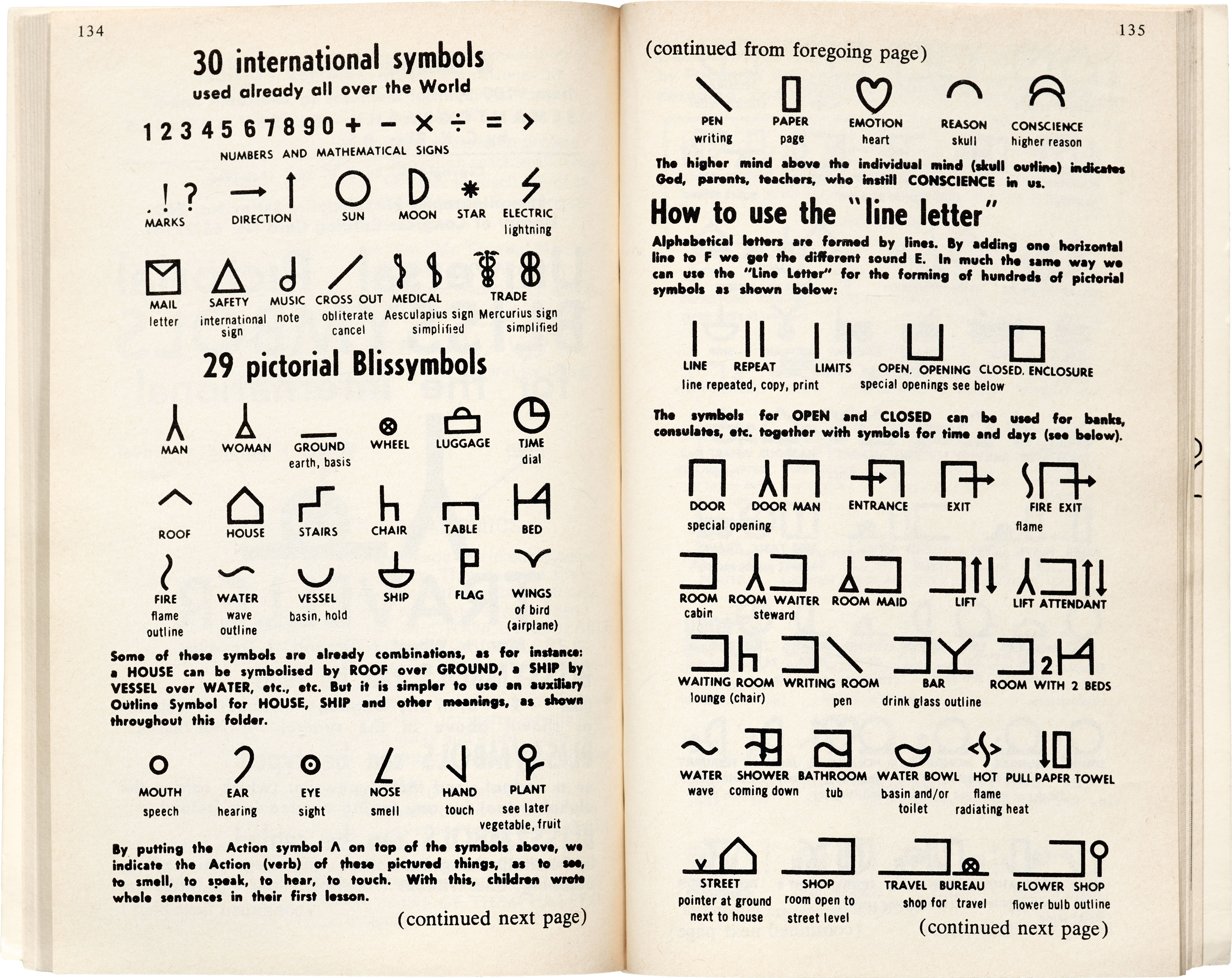
The writing system – originally named World Writing in 1942, then Semantography in 1947, and finally Blissymoblics in the 1960s – contains several hundred basic geometric symbols (“Bliss-characters”) that can be combined in different ways to represent more complex concepts (“Bliss-words”). For example, the Bliss-characters for “house” and “medical” are combined to form the Bliss-word for “hospital” or “clinic”. The modular structure invites comparison to the German language; the German word for “hospital ” – “krankenhaus” – translates directly to “sick house”.
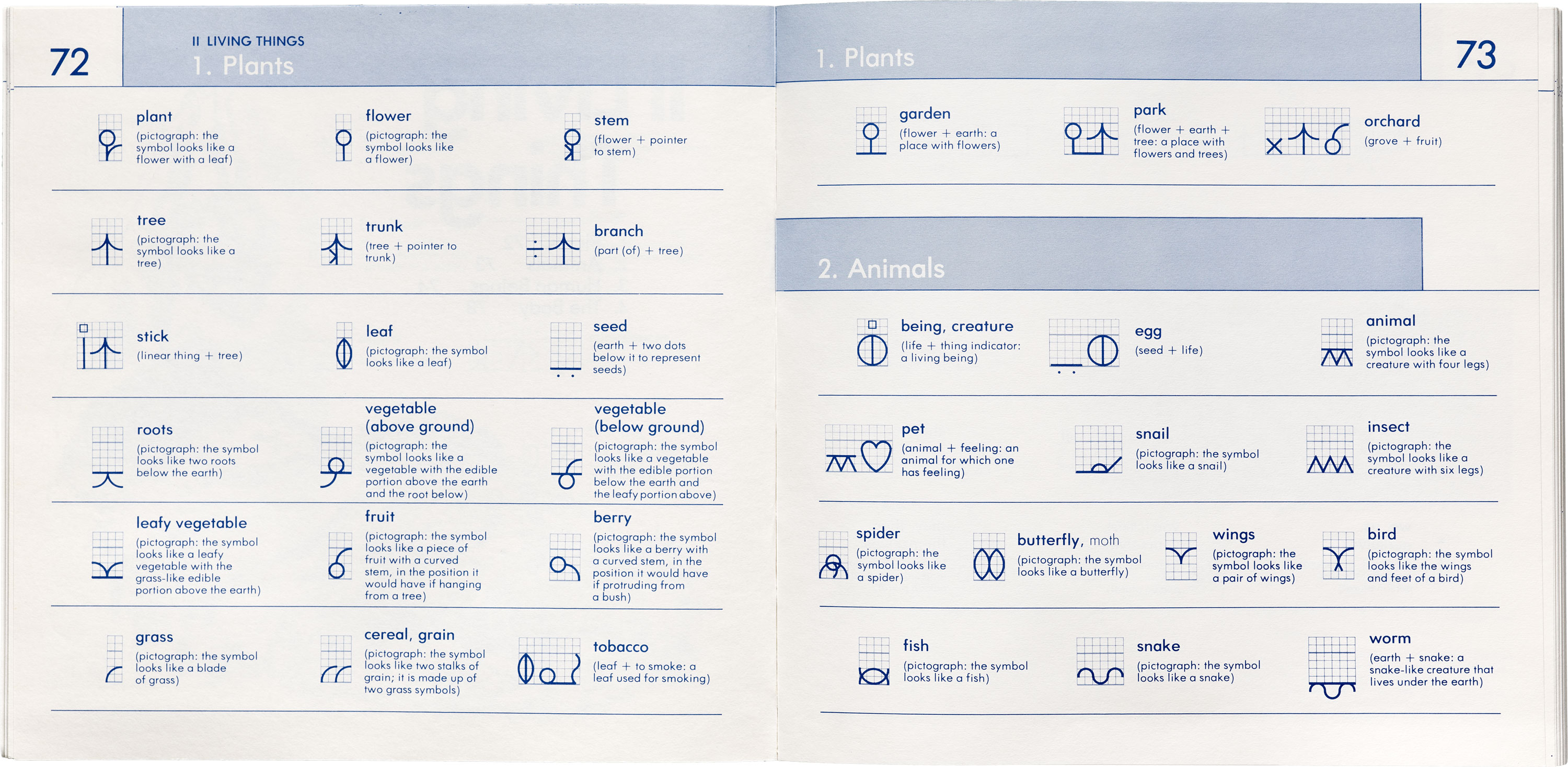
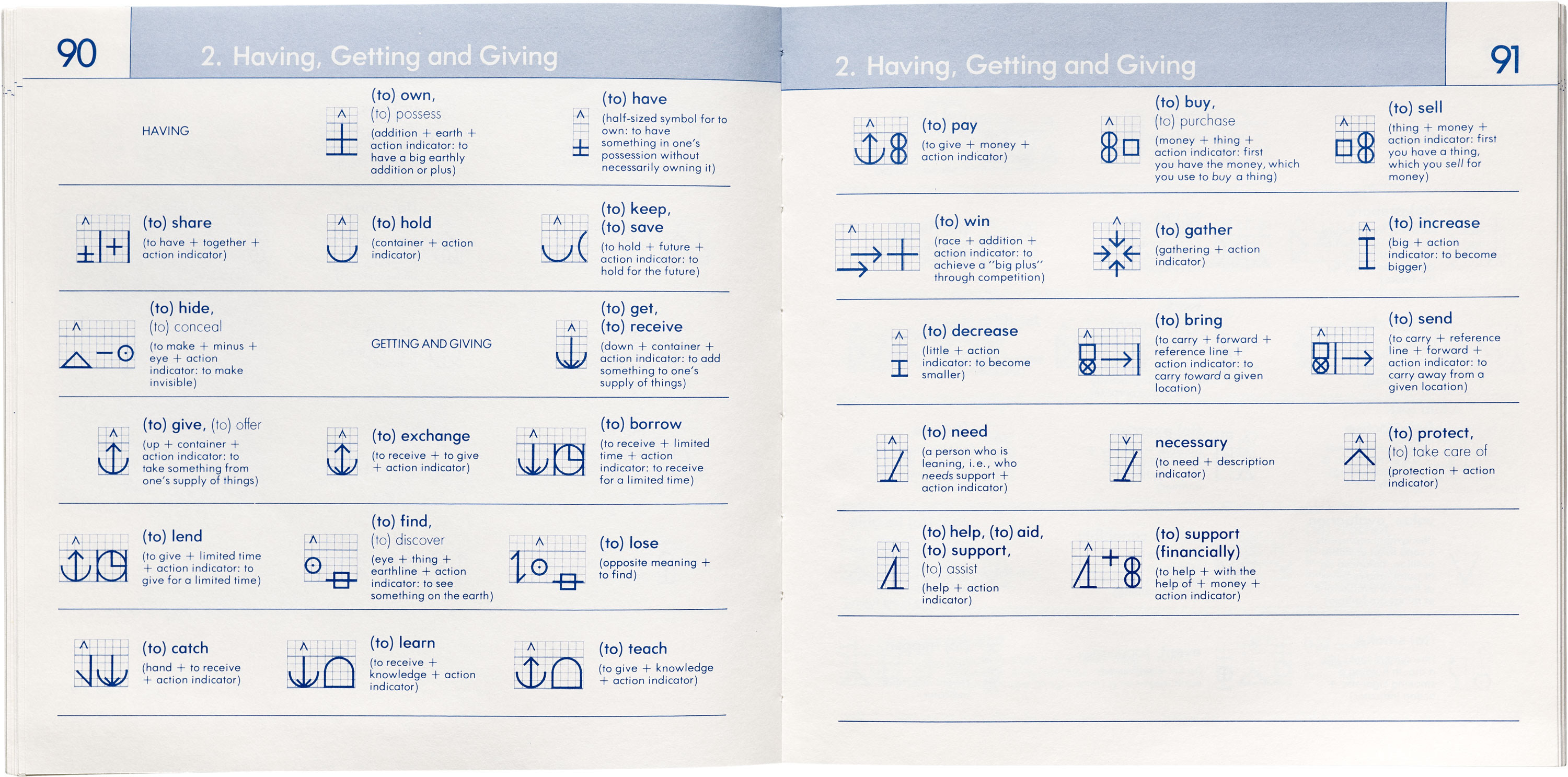

Symbols are constructed on a gridded square matrix, as the orientation, size, and relative position of discrete units can affect their meaning. ( E.g., the Bliss-character for “ground” is a horizontal line aligned to the base of the grid, while “sky” is a horizontal line aligned to the top.) The system is generative, with no limit to the number of symbols that can be created by combining these basic shapes. New symbol proposals are submitted to Blissymbolics Communication International (BCI), the non-profit organization that holds the perpetual exclusive license for use and publication of Blissymbols, and undergo rigorous scrutiny before they’re approved for entry into the database. According to BCI, there are currently more than 5,000 authorized symbols, though, “the learner need only master the meaning of approximately a maximum of 100 to 120 elements” to communicate basic concepts.

While Blissymbolics didn’t have the global impact its creator hoped for – the tireless efforts of Bliss and his wife to garner mainstream recognition and international standardization were mostly fruitless – it found its niche as a tool for “persons with severe speech and physical impairments”. Beginning in 1971, the system was adopted by the Ontario Crippled Children’s Centre (OCCC) (now the Holland Bloorview Kids Rehabilitation Hospital) to aid in communication with non-verbal children, particularly those with cerebral palsy. Bliss was thrilled to learn of this application, though it soon became a source of strife. The teaching methods employed by the OCCC were, in Bliss’s estimation, ignorant of the logic of the system and a disservice to the children. Educators were not only modifying the system as they saw fit, but using it as a stepping stone to alphabetic language (i.e., English), a means to the same harmful end that necessitated its creation in the first place. An arduous legal battle ensued to preserve the integrity of his vision, which Bliss cited as the cause of his physical deterioration and financial ruin.
Given Bliss’s experiences as a refugee and the state of the world in which he lived, it’s easy to understand his attachment to the underlying principles of his writing system. Bliss was raised in a community so ethnically and linguistically diverse that spoken language seemed to impede understanding rather than facilitate it. Working at Telefunken, he had to learn the argot of patent specifications, which he perceived as a barrier to research and scientific progress. In Dachau and Buchenwald, he and other internees were made to stand outside in the freezing night to listen to Adolf Hitler and Joseph Goebbels scream Nazi slogans over loudspeakers. “There are certain words which drive you mad”, Bliss reflected, noting how language can be used to manipulate and deceive.
While the meaning of a word may change from one context to another, symbols are not subject to the same degree of interpretation; an effective symbol communicates its intentions immediately and clearly. Bliss was unwavering in his conviction that his system would finally unite the world in complete understanding, and certainly no pursuit could have seemed more worthwhile.

Thanks to the diverse interests of donors like Marcus, our reference library holds surprises like these that can be just as interesting as the archival work. We welcome research visitors to explore the collection and make their own discoveries.
Join us on October 11 for Live at the Archive: Aaron Marcus Presents Universal Visible Languages. Reserve your ticket here.
